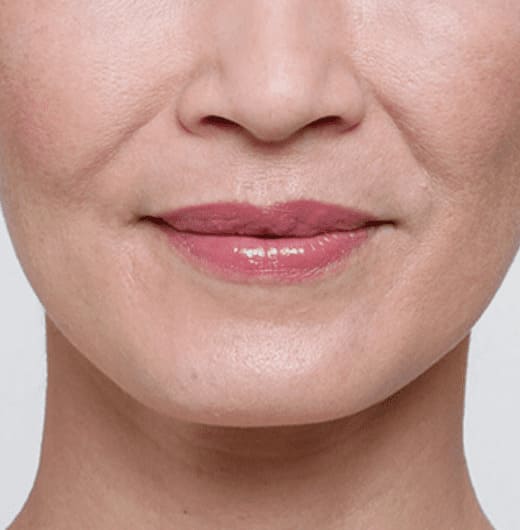Fillers
What are Dermal Fillers?
Dermal fillers help restore volume and fullness to the face while also diminishing facial lines. As we age, our facial skin stretches a bit and we lose subcutaneous fat. As a result, facial muscles are working closer to the skin surface, so facial lines become more apparent. Also there is a loss of facial volume over time. Other factors affecting facial skin can include lifestyle, sun exposure, and heredity.
Am I a good candidate?
Dermal fillers can be very helpful to those that are wanting to:
- Plump thin lips
- Enhance shallow contours
- Soften facial creases and wrinkles
- Decrease or remove the shadow of the lower lids
Patients that are good candidates must be physically healthy, avoid smoking, have a realistic and positive goal in mind for the improvement of their appearance, and are committed to maintaining good skin health.
- Restylane Lyft
- Restylane Refyne
- Restylane Kysse
- Juvederm Ultra
- Juvederm Voluma
- Sculptra
- STOP taking Motrin, Ibuprofen, Aleve or other anti-inflammatory medications; including, Vitamin E, Gingko Biloba, Fish Oil, Green Tea, St John’s Wort (1-2) weeks prior to the procedure. The same is true for Aspirin, but if recommended by your physician for medical reasons (e.g. heart attack or stroke prevention) first check with them prior to stopping it. All of the above are well documented to increase the risk of bruising. For mild discomfort or headaches, Tylenol is recommended.
- DO NOT drink alcoholic beverages 24 hours before your treatment.
- Expect that you may have some bruising and swelling after the procedure. Over the counter Arnica cream and tablets have been shown to decrease bruising. To receive the benefits from Arnica tablets please start taking (3) days prior to your treatment.
- Inform us if you have a history of medication allergies, history of anaphylaxis and any other medical conditions.
- Make sure to schedule your treatment at least (2) weeks prior to an important event, to ensure you are fully recovered.
- It is normal to feel a “firmness” in your treated area(s) for the first few days after treatment. This may depend upon the area(s) treated and product(s) used. Over time, the area(s) will soften and “settle”, leaving you with a soft, natural looking result.
- Apply a cool compress to the areas treated (avoid pressure) as this helps reduce swelling and the potential for bruising.
- Expect treated areas to be red, slightly swollen, and bruised, for the first (2-5) days.
- You may take acetaminophen (e.g., Tylenol) if you experience any mild tenderness or discomfort.
- Massage the treatment areas only if instructed to do so. For example, for Sculptra, follow the 5-5-5 rule: Massage 5 minutes, 5 times a day, for 5 days.
- Avoid strenuous exercise or activity for the remainder of the treatment day. You may resume other normal activities and routines immediately.
- Avoid hot showers or saunas for (6) hours after treatment as they can worsen bruising.
- You may continue taking Arnica supplements or apply topical Arnica gel as these may help alleviate bruising.
- Bruising may be covered with make-up.
- Avoid the previously mentioned herbs and supplements for (1) week as they may increase your potential to bruise. The same is true for Aspirin, Ibuprofen, and Aleve if agreed upon by your prescribing doctor of these medications.
- Wait a minimum of (2) weeks before receiving any facial or massage treatments.
What should i expect?
After your treatment, you may experience minor bruising and swelling. This is completely normal. You will be provided with pre and post care instructions after your treatment to minimize any side effects. If you experience redness at the injection site, this will dissipate usually in 24 hours. You may begin to notice smoothing of facial lines within 24 hours and full results will take up to two weeks. Depending on which facial filler is used, results can last from 6 months up to 2 years after treatment. Facial fillers are not a permanent treatment and continued treatments are recommended to maintain results.
Fillers Treatment Result




Fillers Frequently Asked Questions
The idea of facial fillers can seem scary to many patients, due to a fear of pain resulting from the injections. Many fillers contain lidocaine, a mild anesthetic that helps minimize pain during and after treatment. However, some patients do report mild discomfort during treatment. This can depend on which areas are treated, and how much filler is used.
There are several facial fillers approved by the FDA for the treatment of lines, wrinkles, and other signs of aging. The main differences between facial fillers include the part of the face they’re designed to treat, how long results last, and what the main ingredients are.
This also varies with the filler. Most fillers fill the skin, so they produce immediate — or close to immediate — results. A filler also can stimulate your body to produce collagen, but this takes time.